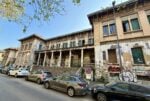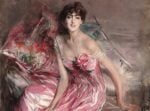56. Biennale – Marco Maggi
.jpg)
Marco Maggi rappresenta l’Uruguay col progetto Global Myopia (pencil & paper) alla 56. Biennale di Venezia.
Comunicato stampa
"Traces deal with significance, they qualify what deserves to be inscribed: whereas the insignificant leaves no trace, the ordinary has no memory, all vanished with the instant of their relevance. Marco Maggi puts that well established order upside down, carving and cutting the insignificant into a trace, the vacuum into an archive, the shadow into an alphabet, the detail into a cosmos, and the smallest of variations into that famous revolution we had ceased to expect."
"Take intimacy and remove from it all subjectivity and affectivity: what you are left with is the rarest of things—structural closeness, disembodied interiority, something one may call objective intimacy."
(Francois Cusset, 2015, excerpt from Marco Maggi's upcoming monograph)
Marco Maggi will represent Uruguay at the Venice Biennale, opening May 9 and on view through November 22. The Uruguayan Pavilion is one of the 29 national pavilions located in the Giardini della Biennale. The 56th International Art Exhibition - la Biennale di Venezia is directed by Okwui Enwezor, curator, art critic and writer, and the Director of the Haus der Kunst, Munich. The Uruguayan Commissioner is artist Ricardo Pascale and the project is curated by Patricia Bentancur, Senior Curator and New Media Director at the Centro Cultural de España in Montevideo (CCE) a leading space for Iberoamerican art.
"Drawing is a dialogue with a superficiality. It is a superficial discipline that allows oneself to take distance from the depth of thinking in order to de-multiply an empathy for the insignificant. Drawing for me is like writing in a language that I don't understand. I don't believe in messages or ideas. Ideas have the tendency to become fixed and aspire ultimately to the status of ideology. Ideas are precarious and should only be delivered with an expiration date. My only objective with Global Myopia is to promote pauses and make time visible."
(Marco Maggi, March 2015)
The red bag
The challenge was to conceive a project that could travel in a carry-on suitcase and unfold on the walls like a .zip file, a portable infinite able to expand slowly during months prior to the inauguration. The project divides the act of drawing in two stages. First, by cutting an alphabet of 10,000 elements during the course of 2014 in New York, and second by using the precut elements to write on the pavilion walls during the spring of 2015. In the same way, the project separates the two key elements of drawing, pencil and paper, into two spaces—paper drawings in the main space and an installation of pencils in the first room. Drawing Machine (nine possible starting points) are nine pencils sent to penitence. The parallel black pencils pointing against the wall are suspended in the air by the tension of nine archery cords.
Born in Montevideo, Uruguay in 1957, Marco Maggi lives and works in New Paltz and Montevideo. His work has been exhibited extensively internationally in galleries, museums, and biennials. He is represented by Josée Bienvenu in New York. In 2013, he received the Premio Figari (Career Award). Selected exhibitions include Instituto Tomie Ohtake, Sao Paulo (2012); NC-arte, Bogota (2011); Museum of Modern Art, New York (2008); Museum of Contemporary Art, Los Angeles (2007); Fifth Gwangju Biennial, South Korea (2004); VIII Havana Biennial (2003); 25th Sao Paulo Biennial (2002); Mercosul Biennial, Brazil (2001). Public collections include The Museum of Modern Art, New York; Museum of Contemporary Art, Los Angeles; Whitney Museum of American Art, New York; Art Institute of Chicago; The Drawing Center, New York; Hirshhorn Museum and Sculpture Garden, Washington D.C.; Museum of Fine Arts, Boston; Fine Arts Museum, San Francisco; Walker Arts Center, Minneapolis; Museum of Latin American Art, Long Beach; El Museo del Barrio, New York; Cisneros Collection, New York; Daros Foundation, Zurich.



